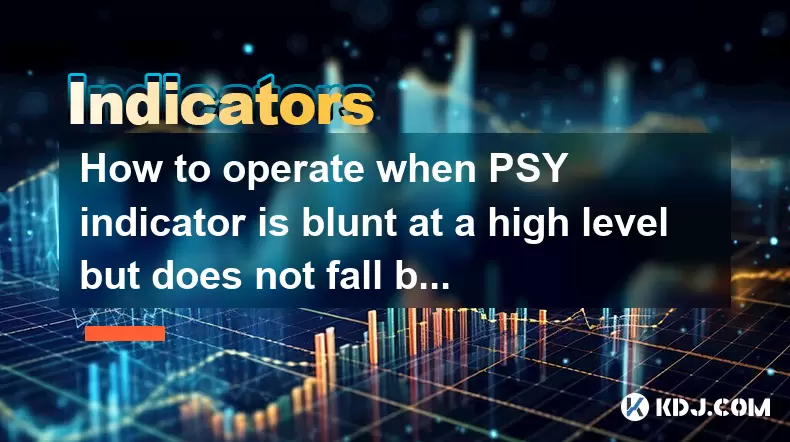-
 Bitcoin
Bitcoin $108,700.4640
0.83% -
 Ethereum
Ethereum $2,605.9626
2.94% -
 Tether USDt
Tether USDt $1.0003
0.03% -
 XRP
XRP $2.3080
2.38% -
 BNB
BNB $661.8185
0.41% -
 Solana
Solana $151.9189
2.27% -
 USDC
USDC $0.9999
0.01% -
 TRON
TRON $0.2876
0.27% -
 Dogecoin
Dogecoin $0.1714
2.83% -
 Cardano
Cardano $0.5876
2.17% -
 Hyperliquid
Hyperliquid $39.0322
3.58% -
 Bitcoin Cash
Bitcoin Cash $503.6852
1.77% -
 Sui
Sui $2.8947
1.94% -
 Chainlink
Chainlink $13.8915
4.90% -
 UNUS SED LEO
UNUS SED LEO $9.1302
0.91% -
 Stellar
Stellar $0.2594
5.13% -
 Avalanche
Avalanche $18.1436
1.84% -
 Shiba Inu
Shiba Inu $0.0...01183
2.18% -
 Toncoin
Toncoin $2.8134
2.69% -
 Hedera
Hedera $0.1609
3.12% -
 Litecoin
Litecoin $87.6209
2.06% -
 Monero
Monero $315.5272
0.05% -
 Polkadot
Polkadot $3.4261
2.45% -
 Dai
Dai $1.0000
0.00% -
 Ethena USDe
Ethena USDe $1.0006
0.04% -
 Bitget Token
Bitget Token $4.3062
0.41% -
 Uniswap
Uniswap $7.6138
3.75% -
 Aave
Aave $291.6223
4.79% -
 Pepe
Pepe $0.0...01006
2.60% -
 Pi
Pi $0.4639
1.68%
How to operate when PSY indicator is blunt at a high level but does not fall back?
When the PSY indicator remains high without falling, it signals sustained bullish sentiment, but traders should avoid impulsive decisions and confirm with volume, price action, or other tools like RSI or MACD.
Jun 29, 2025 at 04:07 pm

Understanding the PSY Indicator in Cryptocurrency Trading
The PSY indicator, short for Psychological Line indicator, is a popular technical analysis tool used by cryptocurrency traders to gauge market sentiment. It measures the ratio of days where prices closed higher versus days where they closed lower over a specified period, typically 12 or 14 days. The resulting value ranges between 0 and 100. A reading above 75 suggests overbought conditions, while a reading below 25 indicates oversold conditions.
In the context of cryptocurrency trading, where volatility is high and emotions often drive price movements, the PSY indicator can be particularly useful. However, situations arise when the PSY indicator becomes blunt at a high level but does not fall back, signaling potential issues with its predictive reliability.
Important: In this case, traders must avoid making impulsive decisions based solely on the PSY indicator.
What Does It Mean When the PSY Indicator Is Blunt at a High Level?
When the PSY indicator hovers around a high level (e.g., 80–90) without showing any significant downward movement, it suggests that the market remains bullish despite being technically overbought. This phenomenon is often observed during strong uptrends or in markets dominated by FOMO (fear of missing out).
This behavior may seem contradictory because traditionally, an overbought condition should precede a pullback. However, in highly speculative assets like cryptocurrencies, momentum can sustain itself for extended periods due to continuous buying pressure.
- High-level stagnation in the PSY indicator might indicate strong accumulation by large players.
- It could also reflect a lack of selling pressure, keeping the price elevated.
- In some cases, it reflects a consolidation phase before a breakout or breakdown.
Traders need to assess whether this situation aligns with broader market dynamics and other indicators.
How to Confirm Market Conditions When PSY Is Not Falling Back
Given that the PSY indicator alone cannot confirm trend reversals, especially when it remains flat at high levels, traders should use additional tools to validate market conditions.
One effective approach is combining the PSY indicator with volume analysis and price action patterns:
- Check if volume is increasing or decreasing during the PSY plateau — decreasing volume may signal weakening momentum.
- Analyze candlestick formations — bearish engulfing patterns or shooting stars during high PSY readings may suggest reversal potential.
- Use moving averages (e.g., MA(20), EMA(50)) to identify whether the price is still supported by key trendlines.
Another complementary method is integrating RSI (Relative Strength Index) or MACD (Moving Average Convergence Divergence) into your analysis. These tools can provide early signs of divergence or convergence that the PSY alone might miss.
Operational Steps When PSY Stalls at a High Level
If you observe the PSY indicator remaining stubbornly high without falling, follow these steps to manage your position effectively:
- Do not immediately sell or take profits just because the indicator shows overbought conditions.
- Monitor price structure for signs of exhaustion such as long upper shadows or tight-range candles.
- Wait for confirmation signals from other technical indicators before considering a reversal trade.
- Adjust stop-loss levels upward if in a long position to protect gains without exiting prematurely.
- Consider partial profit-taking while retaining exposure to potential further upside.
Avoid emotional trading. Even though the PSY appears "stuck," it doesn't mean the trend is about to reverse. Sometimes, crypto markets can remain irrational longer than expected.
Common Mistakes Traders Make With PSY in Overbought Zones
Many traders make critical errors when interpreting the PSY indicator in overbought territory, especially when it refuses to decline:
- Selling too early based only on PSY readings without confirming with other data sources.
- Ignoring market psychology shifts, such as news-driven rallies or whale accumulation phases.
- Misinterpreting sideways movement of the PSY as a sign of weakness when it actually reflects ongoing strength.
- Failing to adapt strategies to different timeframes — what's overbought on a daily chart might still be neutral on a weekly chart.
These mistakes often lead to missed opportunities or premature exits, costing traders potential gains during prolonged bull runs.
Frequently Asked Questions (FAQ)
Q: Can the PSY indicator be used alone for decision-making in crypto trading?
A: No, the PSY indicator should always be used in conjunction with other technical tools such as RSI, MACD, and volume analysis to improve accuracy and reduce false signals.
Q: What timeframes are best suited for analyzing the PSY indicator in crypto?
A: Shorter timeframes like 1-hour or 4-hour charts are more responsive to quick sentiment changes, while daily charts offer clearer overbought/oversold signals in trending markets.
Q: Why does the PSY indicator sometimes stay high even when the price starts to drop?
A: This can occur during distribution phases where smart money begins to exit positions while retail buyers continue pushing the price up temporarily, creating a lag in the indicator.
Q: How can I differentiate between a healthy pullback and a full trend reversal using the PSY indicator?
A: Look for divergence between the PSY line and price action — if the price makes a new high but the PSY fails to do so, it may indicate weakening momentum and a possible reversal.
Disclaimer:info@kdj.com
The information provided is not trading advice. kdj.com does not assume any responsibility for any investments made based on the information provided in this article. Cryptocurrencies are highly volatile and it is highly recommended that you invest with caution after thorough research!
If you believe that the content used on this website infringes your copyright, please contact us immediately (info@kdj.com) and we will delete it promptly.
- Crypto Whale's Portfolio: Decoding Token Stashes and Emerging Trends
- 2025-07-09 08:30:12
- Rare Coin, Lucky Find, Valuable Coin: Unearthing Treasures in Everyday Change
- 2025-07-09 08:30:12
- Coinbase, Altcoins, and the Empire State: A New Era for New York Crypto?
- 2025-07-09 09:30:12
- HTX, WLFI, and Stablecoins: Navigating the Future of Digital Finance
- 2025-07-09 08:50:12
- ADA Whale Activity: Big Wallets Eyeing Cardano for a Breakout?
- 2025-07-09 09:30:12
- Bitcoin: Holding Still Pays Off, Ya Know?
- 2025-07-09 09:30:13
Related knowledge

How to trade Dogecoin based on funding rates and open interest
Jul 07,2025 at 02:49am
<h3>Understanding Funding Rates in Dogecoin Trading</h3><p>Funding rates are periodic payments made to either long or short traders ...

What is the 'God Mode' indicator for Dogecoin
Jul 07,2025 at 04:42pm
<h3>Understanding the 'God Mode' Indicator</h3><p>The 'God Mode' indicator is a term that has emerged within cryptocurrency trading ...

Using Gann Fans on the Dogecoin price chart
Jul 07,2025 at 09:43pm
<h3>Understanding Gann Fans and Their Relevance in Cryptocurrency Trading</h3><p>Gann Fans are a technical analysis tool developed b...

How to spot manipulation on the Dogecoin chart
Jul 06,2025 at 12:35pm
<h3>Understanding the Basics of Chart Manipulation</h3><p>Chart manipulation in the cryptocurrency space, particularly with Dogecoin...

Dogecoin market structure break explained
Jul 07,2025 at 02:51am
<h3>Understanding the Dogecoin Market Structure</h3><p>Dogecoin, initially created as a meme-based cryptocurrency, has evolved into ...

How to backtest a Dogecoin moving average strategy
Jul 08,2025 at 04:50am
<h3>What is a Moving Average Strategy in Cryptocurrency Trading?</h3><p>A moving average strategy is one of the most commonly used t...

How to trade Dogecoin based on funding rates and open interest
Jul 07,2025 at 02:49am
<h3>Understanding Funding Rates in Dogecoin Trading</h3><p>Funding rates are periodic payments made to either long or short traders ...

What is the 'God Mode' indicator for Dogecoin
Jul 07,2025 at 04:42pm
<h3>Understanding the 'God Mode' Indicator</h3><p>The 'God Mode' indicator is a term that has emerged within cryptocurrency trading ...

Using Gann Fans on the Dogecoin price chart
Jul 07,2025 at 09:43pm
<h3>Understanding Gann Fans and Their Relevance in Cryptocurrency Trading</h3><p>Gann Fans are a technical analysis tool developed b...

How to spot manipulation on the Dogecoin chart
Jul 06,2025 at 12:35pm
<h3>Understanding the Basics of Chart Manipulation</h3><p>Chart manipulation in the cryptocurrency space, particularly with Dogecoin...

Dogecoin market structure break explained
Jul 07,2025 at 02:51am
<h3>Understanding the Dogecoin Market Structure</h3><p>Dogecoin, initially created as a meme-based cryptocurrency, has evolved into ...

How to backtest a Dogecoin moving average strategy
Jul 08,2025 at 04:50am
<h3>What is a Moving Average Strategy in Cryptocurrency Trading?</h3><p>A moving average strategy is one of the most commonly used t...
See all articles

























































































